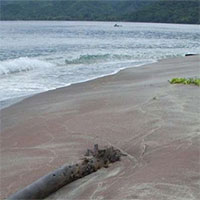Scientists recently discovered a completely new type of chemical bond, and it’s surprisingly strong.
The new type of bond shows the division between strong covalent bonds, which hold molecules together, and weak hydrogen bonds, which form between molecules and can be broken by a single task. as simple as stirring salt into a glass of water, which is not as obvious as the chemistry textbook suggests.
In tertiary chemistry you will find that there are different types of chemical bonds that link atoms into molecules and crystal structures.

Ionic, covalent, and hydrogen bonds are all relatively stable.
Ionic bonds, metallic and non-metallic bonds to form salts. Strong covalent bonds bind molecules together such as carbon dioxide and water. Weaker hydrogen bonds are formed due to a type of electrostatic attraction between hydrogen and a negatively charged atom or molecule, such as when water molecules attract each other and form droplets or crystalline ice.
Ionic, covalent and hydrogen bonds are all relatively stable; they tend to last for a long time and have easily observable effects.
But researchers have long known that in a chemical reaction, when chemical bonds form or break, the story gets more complicated and involves “intermediate states” that can only exist. for a fraction of a second and is difficult to observe.
In the new study, the researchers managed to keep these intermediate states alive long enough to perform a detailed examination. What they found was a hydrogen bond with the strength of a covalent bond, linking the atoms together into something like a molecule.
To do that, the researchers dissolved a hydrogen-fluoride compound in water and monitored how the hydrogen and fluorine atoms interacted.
The fluorine atoms are attracted to the hydrogen atoms due to the imbalance of negative and positive charges on their surfaces, the classical structure of hydrogen bonding. Each hydrogen atom tends to be sandwiched between two fluorine atoms. But those hydrogen sandwiches are bonded together stronger than regular hydrogen bonds, which are so easily broken.
The hydrogen atoms reflect back and forth between the fluorine atoms, forming strong bonds such as covalent bonds and like molecules, which hydrogen bonds cannot form. But the mechanism of the new bond is electrostatic, which means it involves the difference in negative and positive charges that define hydrogen bonding.
The researchers describe their results in a paper in the journal Science. Accordingly, Mischa Bonn and Johannes Hunger, researchers at the Max Planck Institute for Polymers in Germany, who were not involved in the study, wrote that this unusual association blurs clear chemical categories .
“The existence of a covalent-hydrogen bond state not only challenges our current understanding of what a chemical bond is exactly, but it also provides an opportunity to better understand chemical reactions. chemistry, where intermediate reaction states are often mentioned but rarely studied directly”.
Similar bonds can exist in pure water when a hydrogen atom is sandwiched between two water molecules. However, those links are believed to exist but not for long, the researchers wrote. And they have never been observed sufficiently to draw conclusions.
The scientists say the study could open up a “deeper understanding of strong bonding” and intermediate reaction states.

